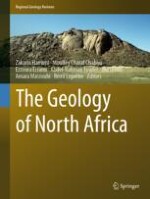This richly illustrated book reviews the geology, tectonics, sedimentary basins and strategic resources of North Africa in 21 chapters. Chapter 1 is a regional synthesis. Chapter 2 examines the deep crustal and upper mantle structure. Chapter 3 compares the West African Craton. Chapters 4,5,6,7 deal with Pan-African-, Variscan (Hercynian)- and Alpine-Belts. Precambrian Geology of Hoggar Shield, north Central Africa will be addressed in Chapter 8. The North African Neoproterozoic and Phanerozoic sedimentary basins are the topic of Chapter 9. Phanerozoic magmatism and geodynamic framework of North Africa are addressed in Chapter 10. Chapters 11,12 deal with petroleum geology and water resources. Important non-metallic- and metallic- ore deposits are presented in Chapter 13,14,15,16. Chapters 17,18 explore geothermal energy and other strategic resources. Chapters 19,20 discuss seismicity, seismotectonics and Neotectonics, and Advances of exploration geophysics in North Africa. The lasttwo chapters (20, 21) focus on meteoric impact craters, geoheritage, geoparks and geotourism in North Africa.
